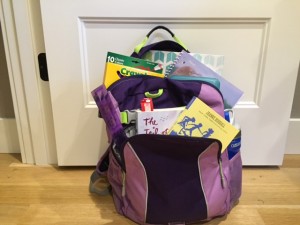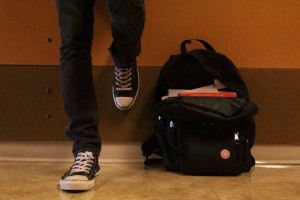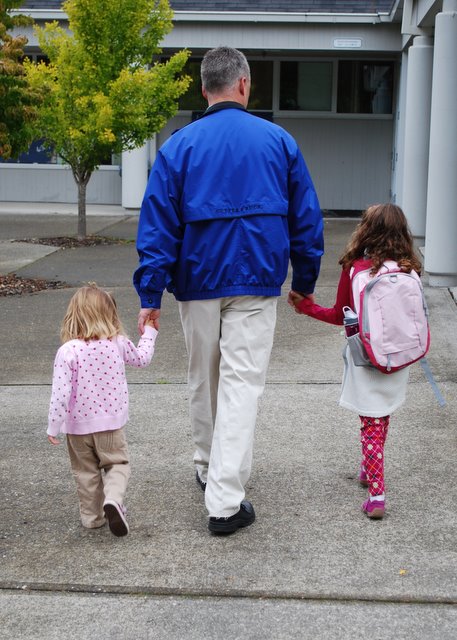
Yes, it’s September. And that means for many of you moms and dads reading this, it’s back-to-school time. Hopefully you survived the age-old tradition of “back-to-school” shopping and weren’t among the unfortunate ones who erroneously thought purchasing school supplies mid-August would be “plenty of time.” If you have managed to find last year’s lunch box in still usable condition (and can convince your kids to use it two years in a row), then you are well on your way to a successful start to the year.
One fundamental piece of gear for kids, starting in kindergarten, is a backpack — one that is both cool enough to impress on day one and big enough to schlep all your student’s educational loot. Whether your child is 5 or 15, it’s important to look beyond the Elsa and Anna design or the subtle, yet essential, “it” logo and ensure his or her backpack fits and is being worn properly. This is especially critical as students reach the upper grades and are toting a hefty load to and from school each day.
Dr. Murray Smith at Eastside Chiropractic offers some quick and easy tips to help ensure your child is safely carrying his or her load.
-

Even the youngest students should have properly sized backpacks for school, trips, and hikes. Make sure it fits. This seems like a no brainer, but it’s probably the most important tip. Many parents try to stretch a backpack’s use for a few years and buy big. However, backpacks should not be wider or longer than the wearer’s torso and not extend more than four inches below the waist. When backpacks are too big, it causes the wearer to lean forward while walking, which leads to lower back pain.
- Wear both straps. I remember when I was in high school and it was “cool” to sling your 40-pound Jansport over one shoulder. No more. Encourage your child to always wear both straps and to keep them adjusted snugly with the pack close to the body. Wearing only one strap places the pack’s weight on one side of the body, causing a twisting motion that can lead to lower back pain and poor posture.
- Look for padded straps and back. Padded straps prevent packs from digging into the neck and shoulders while simultaneously providing added support for carrying larger loads. Additional padding in the back of the pack is not only comfortable and supportive in the lumbar region, but prevents edges of books and notepads from poking the wearer.
- Lighten the load. Kids (or adults for that matter) should carry only 10 percent of their body weight at one time. So, if your freshman weighs 110 pounds, 11 pounds should be the maximum weight of their pack. Distribution of weight in the pack can also make a big difference. Keep heavy objects (chemistry textbook anyone?) next to the back and pack lighter, bulkier things in the outer compartments.
- Avoid rolling backpacks. The American Chiropractic Association recommends against the use of rolling backpacks. While we parents may be tempted, seeing them as a “safer” way for kids to tote around their heavy load, the ACA warns that rolling backpacks can clutter school hallways creating trip and fall hazards for other students. In addition, many rolling style packs have handles that are too short, necessitating a twisted posture to pull them. Save the rolling bags for trips to grandma’s and not daily use.
-

High School Students are especially susceptible to issues from over-weight and improperly worn backpacks. Be active. The best defense against lower back pain and strain, no matter your age, is to live an active and healthy lifestyle. When you are active, the muscles of the torso and abdomen are engaged. Stronger muscles equal more stability when carrying a load (or doing just about anything else).
Parents should be alert as the school year progresses to warning signs of an overloaded backpack. Avoid injury by recognizing the following warning signs that your child’s backpack is too heavy.
- Your child changes posture when wearing his or her backpack.
- The pack is a struggle to put on or take off.
- Your child complains of pain when wearing his or her backpack.
- Complaints of tingling or numbness in the arms and hands.
- Red marks develop on the shoulders after wearing the pack.

If you’ve taken all the above precautions, yet your child is still complaining of back, shoulder or neck pain, it may be time to seek the advice of a medical professional. Check in with your child’s pediatrician or visit with a trusted chiropractor to seek insight into the cause of the pain.
Dr. Murray Smith and Dr. Amanda Kugel at Eastside Chiropractic both have extensive training and experience treating patients of all ages and understand the gentler treatment methods appropriate for children. In addition to chiropractic treatment, Drs. Smith and Kugel can also create healthy living plans for children to help develop good muscle tone, posture, sleeping habits and nutrition.
You can reach Eastside Chiropractic by visiting them online or calling 360-459-9000.

















































